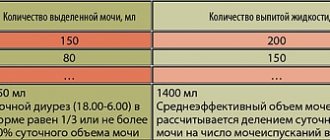Acute leukemia (leukemia) is a malignant oncological disease of the hematopoietic system with primary localization in the bone marrow. Its further spread is observed in the peripheral blood, spleen, lymph nodes and other organs and tissues.
https://repo.knmu.edu.ua/handle/123456789/3190
The incidence of acute leukemia is 13 cases per 100,000 population per year and only 1-2% of all malignant neoplasms annually.
https://repo.knmu.edu.ua/handle/123456789/3190
Acute leukemias are divided into a number of types, among which the most important are acute lymphoblastic (ALL) and myeloblastic (AML) types. Their classification depends on which cells became the initial ones during the development of the disease.
The average age of people who develop acute lymphoblastic leukemia is only 10 years. In the older population, this disease occurs in only 20% of patients.
Lymphoblastic is the most common malignant neoplasm in pediatric practice and accounts for 1/3 of all tumors. It is known that the 5-year survival rate in childhood is 80%, in adults - 40%.
As for acute myeloid, the average age of patients is about 65 years. But unfortunately, every year the incidence increases from 1.8 cases per 100,000 population in children to 17.7 per 100,000 population over 65 years of age. In acute myeloid leukemia, the 5-year survival rate in persons under 20 years of age is 50%, in persons over 60 years of age it is less than 20%.
https://repo.knmu.edu.ua/handle/123456789/3190
Causes of development of acute leukemia
Epidemiological studies of acute leukemia have examined many possible causes that could lead to this disease. But only a single environmental factor (ionizing radiation) is significantly associated with acute leukemia. The degree of risk depends on the radiation dose, duration and age of the person at the time of exposure. The study demonstrated a relationship between the degree of radiation exposure and the occurrence of leukemia. Potential exposure to ionizing radiation in children may occur before conception, during pregnancy, or during the postpartum period.
https://ehp.niehs.nih.gov/doi/full/10.1289/ehp.9023
Most environmental risk factors were found to be inconsistently associated with any form of acute leukemia.
Thus, in addition to ionizing radiation, these include:
- genetic predisposition;
- unfavorable environmental factors;
- significant amounts of carcinogens in everyday life (in particular pesticides, benzene)
- medications (for example, chlorambucil, cyclophosphamide, etc.);
- use of alcohol and illicit drugs;
- smoking cigarettes;
- other hematological diseases.
Also, scientists do not exclude the possibility of infectious risk factors (Epstein-Barr virus, HTLV Retrovirus), maternal reproductive history, pregnancy, genetic defects and chromosomal abnormalities.
https://ehp.niehs.nih.gov/doi/full/10.1289/ehp.9023
Pathophysiology
Under the influence of the above etiological factors, somatic mutations of the precursor cells of hematopoietic and lymphoid tissues occur in the human body.
https://onlinelibrary.wiley.com/doi/abs/10.1046/j.1526-0968.2002.00402.x
The first stage of leukemia formation begins with a mutation in the parent cell, which acquires the ability to rapidly proliferate. As a result of this process, cells are formed that are their clone.
At the stage of formation of the first copy, the tumor retains the ability to further differentiate (benign tumor growth). Over time, numerous mutations and changes in structure occur in the primary leukemia clone. As a result, they not only actively proliferate, but also lose the ability to differentiate (malignant tumor growth).
In both children and adults, acute leukemia can present with extremely high blast counts; a phenomenon known as hyperleukocytosis. Respiratory failure, intracranial hemorrhage and severe metabolic abnormalities frequently occur in acute hyperleukocytic leukemia (AHL) and are the main determinants of the observed high early mortality (20% to 40%).
The process leading to these complications has long been known as leukostasis, but the biological mechanisms underlying its development and progression remain unclear. Traditionally, leukostasis is associated with the accumulation of leukemic blasts in the microcirculation, and its treatment is aimed at quickly reducing leukocytosis. https://onlinelibrary.wiley.com/doi/abs/10.1046/j.1526-0968.2002.00402.x
Treatment
Currently, there are many ways to treat acute leukemia.
- Chemotherapy is the main method, which involves the use of specific medications that destroy malignant cells. As a rule, oncologists-chemotherapists use multicomponent regimens, selecting drugs depending on the type of leukemia cells and the individual characteristics of the body. The treatment regimen consists of four main stages: induction - the main impact, consolidation - consolidation of the result, reinduction - repeated induction to destroy “dormant” leukemic foci, and as the final stage - maintenance therapy with low doses of cytostatics.
- Transfusion therapy is used as an auxiliary therapy to improve the tolerability of chemotherapy drugs. To correct anemic syndrome, the patient is administered red blood cells or platelets, various isotonic solutions, etc.
- Antibiotic therapy is given when infections occur.
- Radiation therapy is usually given before a bone marrow transplant to maximize the destruction of leukemia cells.
- Bone marrow transplantation is carried out after high-dose polychemotherapy, which is often combined with irradiation of the hematopoietic centers. Autotransplantation of healthy hematopoietic stem cells is possible, which are taken from the patient before starting chemotherapy and stored until the end of the course. If it is no longer possible to remove your own healthy cells, they are taken from a donor, but there is a fairly high risk of transplant rejection: the transplanted immune cells begin to attack the body of the new host, which is foreign to them.
- Palliative care is most often used for elderly patients who cannot tolerate severe treatment. Its goal is not recovery, but to inhibit tumor growth and reduce the rate of production of pathological leukocytes. For this purpose, low doses of chemotherapy, radiation therapy, targeted and immunostimulating drugs are prescribed.
In the list of clinical recommendations for acute leukemia, the most important place is the exclusion of any infections during treatment. Before starting the course, the patient must get rid of carious teeth, treat respiratory tract infections, etc. During treatment, he is in a hospital, where a strict aseptic regime is maintained to exclude accidental infection.
Classification
The morphological substrate of acute leukemia is immature blast cells - undifferentiated or poorly differentiated. The French-American-British group of scientists (FAB) presented a classification of myeloid leukemia. It divides AML into 8 subtypes (M0 to M7). Lymphocytic leukemia according to FAB is divided into 3 types (from L1 to L3). This classification is based on the morphology and cytochemical staining of the blasts.
M0 - indicates acute myeloblastic leukemia with blast cells that do not differentiate
Most often diagnosed in the mature generation. Accounts for approximately 5-10% of all patients with AML. The aspirated red marrow from the bones is hypercellular and contains significant numbers of leukemic blasts. They are round cells of small to medium size with an eccentric nucleus with a flattened shape.
M1 - defines acute myeloblastic leukemia, in the absence of blast maturation. It is observed in all age groups, with the highest incidence in adults and children under one year of age. White blood cells are increased in approximately 50% of patients. Myeloperoxidase or Sudan black B stains in more than 3% of blasts, indicating granulocyte differentiation.
M2 - acute myeloblastic leukemia with signs of blast maturation. The symptoms of M2 AML are similar to type M1. White blood cells increase in half of the patients. Myeloblasts are commonly found on blood smears and may be the predominant cell type. Bone marrow is hypercellular.
M3 Acute promyelocytic leukemia. The average age and survival is about 18 months and occurs in younger people. M3 is of particular interest because it results in a fusion of the retinoic acid receptor alpha (RAR-alpha) gene on chromosome 17 with a transcription unit called PML (for promyelocytic leukemia) on chromosome 15.
M4 - acute myelomonocytic leukemia. The number of leukocytes, in most cases, increases due to monocytic cells (monoblasts, platelets, monocytes) to 5000/l or more. Anemia and thrombocytopenia are present in almost all cases. Bone marrow differs from M1, M2 and M3 in that monocytic cells exceed 20% of non-erythroid nucleated cells.
M5 - acute monocytic leukemia. Common symptoms include weakness, bleeding, and a diffuse erythematous skin rash. Extramedullary infiltration of the lungs, colon, meninges, lymph nodes, bladder and larynx, as well as gingival hyperplasia, are often observed. One of the diagnostic criteria for M5 is that 80% or more of all nonerythroid cells in the bone marrow are monocytic cells. (Characterized by the presence of all stages of development of monocytes, monoblasts, promonocytes, monocytes).
M6 - acute erythroleukemia. A rare form of leukemia that primarily affects peripheral cells. No cases have been observed in children. The most common manifestation is bleeding. The dominant change in peripheral blood is anemia with poikilocytosis and anisocytosis. Nucleated red blood cells exhibit an abnormal nuclear configuration. White blood cells and platelets are usually reduced. A diagnosis of erythroleukemia can be made if more than 50% of all nucleated cells in the bone marrow are erythroid and 30% or more of all remaining non-erythroid cells are blast cells.
M7 - acute megakaryoblastic leukemia (AMkL). It is rare and is characterized by transformation into chronic granulocytic leukemia (CGL) and myelodysplastic syndrome (MDS). Bone marrow biopsy shows an increase in the number of fibroblasts, as well as the presence of more than 30% blast cells.
Morphological FAB (French-American-British) classification of acute lymphoblastic leukemia:
* L1 - acute lymphoblastic leukemia with small blasts (usually children).
* L2 - acute lymphoblastic leukemia with large blasts (more often in adults).
* L3 - acute lymphoblastic leukemia with blast cells of the cell type found in Burkitt's lymphoma.
https://www.intechopen.com/books/acute-leukemia-the-scientist-s-perspective-and-challenge/classification-of-acute-leukemia
Forecasts
A few decades ago, being diagnosed with acute leukemia was essentially a death sentence. Currently, the situation has improved significantly; the use of new, effective drugs makes it possible to achieve a cure for more than half of the patients. With timely treatment, complete remission occurs in 45-80% of patients. The best indicators are in children under 10 years of age, among whom up to 86% of patients recover completely, the worst are in older people, whose five-year survival rate does not exceed 30%.
Clinical symptoms
Acute leukemia can be asymptomatic or have a fairly acute onset. It all starts with intoxication syndrome due to increased breakdown of leukemia cells. Manifested by weight loss, loss of strength, general weakness, drowsiness, decreased appetite, nausea, vomiting, headache, high temperature (neoplastic fever), sweating (especially at night). In general, the picture of the disease has certain syndromes, including:
Immunodeficiency (caused by a sharp violation of cellular and humoral immunity due to the functional inferiority of leukocytes). It can manifest itself as sore throat, pneumonia and the presence of other infections (bacterial, viral, fungal).
Hyperplastic is caused by leukemic tissue infiltration and is represented by enlarged lymph nodes, tonsils, liver and spleen (hepatolienal syndrome).
Hemorrhagic (as a result of a decrease in the number of platelets, increased vascular permeability and impaired coagulation). It can manifest itself as subcutaneous hemorrhages and nasal, gastric, intestinal, renal, and pulmonary bleeding.
Anemic syndrome (caused by a decrease in the number of red hematopoietic cells). Presented with weakness, dizziness, tinnitus, darkening of the eyes, pale skin, tachycardia.
There are also secondary symptoms and syndromes that are not observed in all groups of patients, including:
- Osteoarticular - pain in bones and joints.
- Ulcerative-necrotic - stomatitis, gingivitis, tonsillitis.
- Damage to the genitourinary system - enlargement and hardening of the testicles or ovaries, urination disorders, possible hematuria, uterine bleeding.
- Damage to the digestive organs - dysphagia and obstruction of the esophagus, signs of gastric ulcer, necrotizing enterocolitis.
- Kidney damage - proteinuria, microhematuria, leukocyturia, signs of acute renal failure.
- Lung damage - cough, hemoptysis, shortness of breath, fine wheezing, signs of respiratory failure.
- Heart damage - signs of myocarditis, exudative pericarditis, arrhythmia.
- Skin damage - the appearance of leukemia - dense infiltrates (nodes) of different colors, which are often accompanied by itching.
https://repo.knmu.edu.ua/handle/123456789/3190
Diagnosis of acute leukemia
Acute leukemia does not always manifest itself in the early stages of development, since its symptoms are not considered specific and can indicate a number of other conditions. Therefore, quite often, patients find out about the disease in the later stages, since they do not consult doctors in time.
The main diagnostic criteria are:
— presence of hyperplastic, anemic, hemorrhagic, infectious-toxic syndromes;
- decrease in red blood cells, platelets, presence of blasts in a clinical blood test;
- blastic metaplasia, reduction of erythroid, granulocytic and megakaryocyte lineages in the myelogram and trephine biopsy of the iliac bone.
There are advanced and accurate methods for identifying types of leukemia, but they are expensive and not available in most hospitals in developing countries. Thus, alternative methods have been proposed.
The option is based on the morphological properties of bone marrow images. (https://www.sciencedirect.com/science/article/pii/S0933365712000450) The disease is characterized by the proliferation of immature cells (blasts) in the bone marrow. Their percentage is necessary for the diagnosis of acute leukemia and is set at 30% or more.
In addition, recently introduced classification systems have reduced the blast count to 20% for many types of leukemia and do not require any minimum percentage in the presence of certain morphological and cytogenetic features. https://www.intechopen.com/books/acute-leukemia-the-scientist-s-perspective-and-challenge/classification-of-acute-leukemia
Questions and answers
How long do people live with acute blood leukemia?
If left untreated, death occurs within 1-2 years after acute leukemia is diagnosed. Modern methods and effective drugs make it possible to achieve complete remission in 80% of patients, depending on their age, current condition, stage of the process and other factors. More than half of patients live more than 10 years after treatment.
How does leukemia manifest?
The external manifestations of the disease at the initial stage resemble the symptoms of a common cold, so they are often ignored. If the elevated temperature does not decrease within two weeks, weakness, malaise, sweating and other “cold” sensations do not go away, you must contact an oncologist for examination as soon as possible.
Can acute leukemia be cured?
In case of acute leukemia, timely initiation of treatment greatly increases the patient’s chances of recovery. Therefore, if you notice any disturbing signs, you should visit an oncologist, because they may turn out to be symptoms of a serious and dangerous, rapidly developing disease. In this case, you cannot waste time, because every day reduces the chances of treatment success.
Attention! You can cure this disease for free and receive medical care at JSC "Medicine" (clinic of Academician Roitberg) under the State Guarantees program of Compulsory Medical Insurance (Compulsory Medical Insurance) and High-Tech Medical Care. To find out more, please call +7(495) 775-73-60, or on the VMP page for compulsory medical insurance










